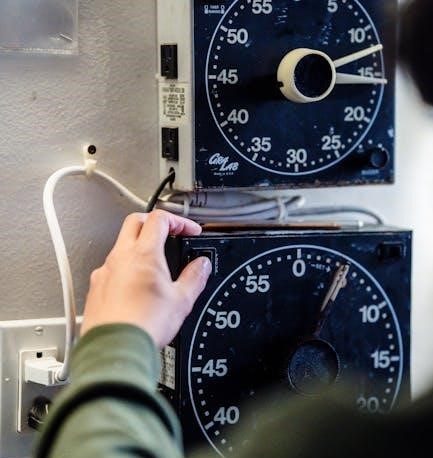Understanding speaker wire gauge is crucial for optimal audio performance. This guide explores wire materials‚ impedance‚ and gauge selection to ensure clear sound quality in your setup.
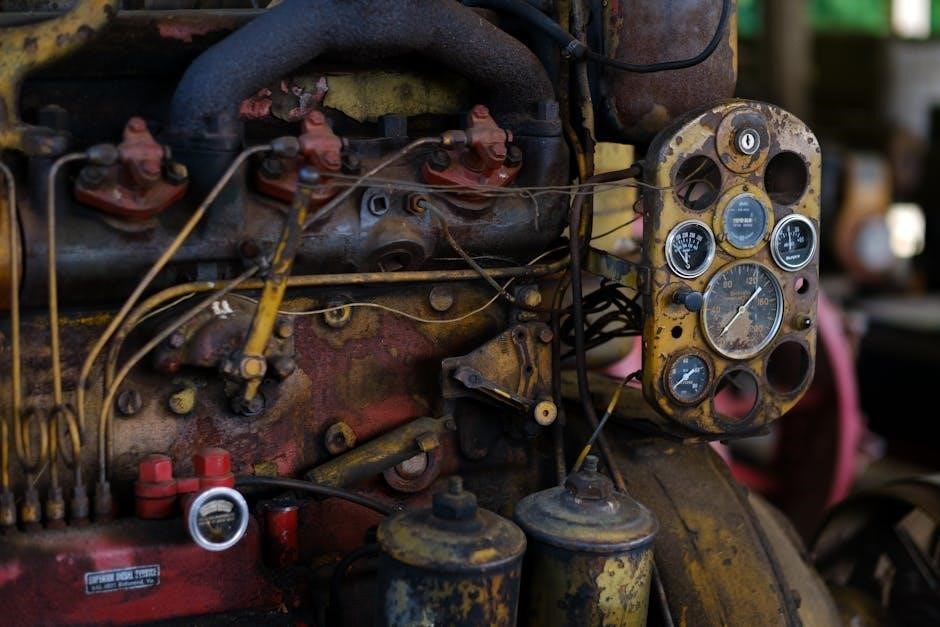
Why Speaker Wire Gauge Matters
Speaker wire gauge plays a critical role in ensuring optimal audio performance. A lower gauge (thicker wire) reduces resistance‚ minimizing signal loss and voltage drop‚ which is essential for maintaining sound clarity and bass response. Thicker wires are better suited for longer runs or higher power systems‚ while thinner gauges may suffice for shorter distances. The gauge directly impacts the audio quality‚ as excessive resistance can degrade the signal‚ leading to weaker or distorted sound. Choosing the appropriate gauge ensures efficient power transfer and prevents overheating‚ making it a vital consideration for any audio setup.
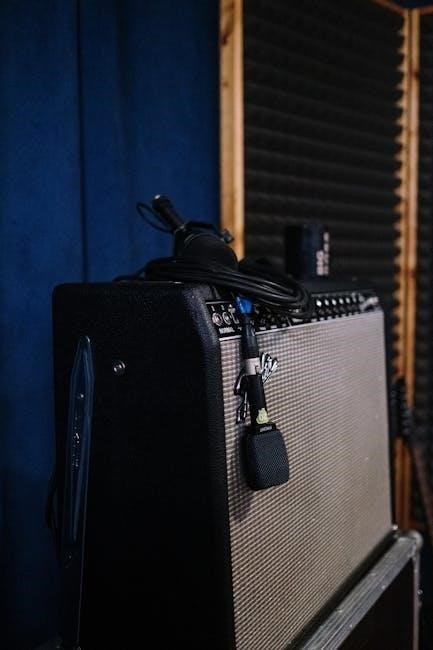
Fundamentals of Speaker Wire
Speaker wire consists of insulated copper strands‚ with thicker gauges offering lower resistance. Proper wire selection ensures minimal signal loss and optimal audio performance in any setup.
How Speaker Wire Gauge Works
Speaker wire gauge determines the thickness and conductivity of the wire‚ with lower gauge numbers indicating thicker wires that carry more current with less resistance. Thicker wires‚ like 12 or 14 AWG‚ are ideal for longer runs as they minimize signal loss due to lower resistance. The American Wire Gauge (AWG) system is used to measure wire thickness. Copper is the most common material due to its excellent conductivity‚ with oxygen-free copper offering superior performance. The number of wire strands affects flexibility‚ making multi-strand wires easier to install. When selecting a gauge‚ consider factors like wire length‚ system power‚ and speaker impedance. Lower impedance systems require thicker wires to handle higher current without overheating. Proper gauge selection ensures optimal audio quality and system performance‚ while incorrect choices can lead to signal degradation. Always opt for a slightly thicker gauge to ensure reliability and minimize potential issues. Additionally‚ insulation and shielding protect the wire from interference‚ ensuring clear signal transmission in various environments. Understanding these principles helps in making informed decisions for different audio setups‚ ensuring the best possible sound quality and system efficiency.
Types of Speaker Wire Materials
Speaker wire materials vary in conductivity and durability‚ impacting audio quality. Copper is the most common choice due to its high conductivity and affordability. Oxygen-free copper (OFC) offers even better performance by reducing impurities. Silver-coated copper wires enhance conductivity further‚ though at a higher cost. Aluminum wires are less conductive but lighter and cheaper‚ often used in car audio systems. Some wires feature multiple materials‚ like copper-clad aluminum‚ balancing cost and performance. Insulation is crucial for protecting wires from interference; common materials include PVC‚ Teflon‚ and silicone. Shielded wires‚ often with braided or foil shielding‚ minimize noise in high-interference environments. The choice of material depends on the setup‚ budget‚ and desired sound quality. Proper material selection ensures clear signal transmission and system reliability.

Understanding Wire Impedance
Wire impedance refers to the resistance that a speaker wire presents to the flow of electrical current. It is measured in ohms and is influenced by the wire’s gauge‚ length‚ and material. Lower impedance wires allow more current to flow‚ reducing voltage drop and signal loss. Higher impedance wires‚ while less common‚ can still be effective in specific setups. Impedance matching is critical to ensure compatibility between the wire‚ amplifier‚ and speakers. Proper impedance balance minimizes energy loss and ensures optimal audio performance. The choice of wire material‚ such as copper or aluminum‚ also impacts impedance due to differences in conductivity. Understanding impedance helps in selecting the right wire for a system‚ ensuring clear sound and efficient power transfer. It is a key factor in maintaining sound quality and system efficiency.

Choosing the Right Speaker Wire Gauge
Selecting the right speaker wire gauge ensures optimal audio performance. Consider impedance‚ power handling‚ and wire length to match your system’s needs for clear sound quality.
Factors to Consider When Selecting Gauge
When choosing the right speaker wire gauge‚ several factors must be considered to ensure optimal performance. Impedance and power handling are critical‚ as they determine the current flow and resistance in the system. The length of the wire also plays a significant role‚ as longer wires can cause signal loss‚ requiring a thicker gauge to maintain sound quality. Additionally‚ the material quality of the wire‚ such as copper or aluminum‚ impacts conductivity and durability. Understanding these factors helps balance performance and cost‚ ensuring clear and distortion-free audio. Proper gauge selection ensures minimal resistance and maximum power transfer‚ making it essential for achieving the best sound quality in any setup.
Speaker Impedance and Its Impact on Wire Gauge
Speaker impedance‚ typically measured in ohms‚ plays a crucial role in determining the appropriate wire gauge. Lower impedance (e.g.‚ 4 ohms) requires thicker wire to handle higher current flow‚ while higher impedance (e.g.‚ 8 or 16 ohms) can use thinner wire. The wire’s resistance should not exceed 5% of the speaker’s nominal impedance to minimize signal loss. For example‚ an 8-ohm speaker system should use wire with a resistance of 0.4 ohms or less. This ensures optimal power transfer and sound quality. Matching the wire gauge to the speaker’s impedance prevents distortion and maintains clarity‚ making it a critical factor in system design. Proper gauge selection balances performance and efficiency‚ ensuring reliable operation across various audio setups.
Power Handling and Wire Gauge
Power handling is a critical factor when selecting speaker wire gauge. Thicker wires (lower gauge) can handle higher power outputs without overheating or degrading sound quality. For high-powered systems‚ a lower gauge (e.g.‚ 12 or 14 AWG) is essential to ensure efficient power transfer. Higher gauges (e.g.‚ 18 or 20 AWG) are suitable for lower-power setups but may struggle with high current demands. The wire’s current capacity must match the system’s power requirements to avoid signal loss or potential damage. Voltage drop increases with thinner wires‚ especially over long runs‚ which can degrade sound clarity. Choosing the right gauge ensures optimal power delivery‚ maintaining dynamic range and reducing distortion; Always consider the total power output and speaker sensitivity when selecting the appropriate wire gauge for your setup. Proper matching ensures reliable performance and preserves audio fidelity.
Length of Wire and Its Effect on Signal Quality
The length of speaker wire significantly impacts signal quality due to resistance and voltage drop. Longer wires increase resistance‚ leading to greater signal degradation. For example‚ a 14-gauge wire can handle up to 80 feet without noticeable loss‚ while thinner wires (e.g.‚ 18 AWG) may struggle with even shorter runs. Voltage drop accumulates with distance‚ reducing the power delivered to the speakers. This results in weaker bass‚ reduced clarity‚ and overall poor sound reproduction. To maintain sound quality‚ choose the appropriate gauge based on the wire’s length and the system’s power requirements. For longer installations‚ a thicker wire (lower gauge) is essential to minimize signal loss and ensure optimal performance. Always balance wire length with gauge to preserve audio fidelity. Proper planning prevents degradation and ensures a clear‚ dynamic soundstage.

Maximum Allowable Voltage and Current
Speaker wire must handle the system’s voltage and current without degradation. Exceeding these limits can cause signal loss or damage. Thicker wires (lower gauge) support higher current and voltage‚ minimizing resistance and ensuring reliable performance.
Voltage Drop in Speaker Wire
Voltage drop in speaker wire occurs due to resistance‚ causing signal loss as current travels through the wire. Thicker wires (lower gauge) have less resistance‚ minimizing voltage drop. Longer wires increase resistance‚ leading to greater signal degradation. For optimal performance‚ selecting the appropriate gauge ensures minimal voltage drop‚ maintaining sound quality. Higher gauges (thinner wires) are more susceptible to voltage drop‚ especially over long distances. To avoid significant signal loss‚ calculate the maximum allowable voltage drop based on wire gauge‚ speaker impedance‚ and system power requirements. Proper wire sizing ensures reliable power delivery to speakers‚ preserving audio fidelity and system efficiency. Always consider wire length and gauge to prevent excessive voltage drop and ensure optimal audio performance.
Calculating Maximum Current Capacity
Calculating the maximum current capacity of speaker wire ensures safe and efficient power delivery to your audio system. Use Ohm’s Law (I = P / V) to determine current‚ where P is power in watts and V is voltage. Speaker impedance and wire gauge significantly impact current capacity. Thicker wires (lower gauge) can handle higher currents due to lower resistance. Consider the wire’s cross-sectional area and material conductivity. For example‚ a 12 AWG wire can typically handle up to 20 amps‚ while an 18 AWG wire may max out at 5 amps. Always consult wire gauge charts or use online calculators for precise calculations. Exceeding the current capacity can cause overheating or signal degradation‚ so accurate sizing is essential for optimal performance and system safety. Proper planning ensures reliable power delivery to your speakers‚ preserving sound quality and system integrity.
Role of Wire Gauge in Reducing Signal Loss
Wire gauge plays a critical role in minimizing signal loss‚ ensuring high-quality audio transmission. Thicker wires (lower gauge numbers) have less resistance‚ reducing voltage drop and signal degradation over longer distances. A lower gauge wire‚ such as 12 AWG‚ is ideal for longer runs‚ while higher gauges like 18 AWG are sufficient for shorter connections. The American Wire Gauge (AWG) system helps determine the appropriate size based on power requirements and cable length. Using the correct gauge ensures minimal resistance‚ preserving signal strength and audio fidelity. Proper wire sizing prevents power loss and distortion‚ delivering clean sound to your speakers. Always match the wire gauge to your system’s specifications for optimal performance and minimal signal loss.
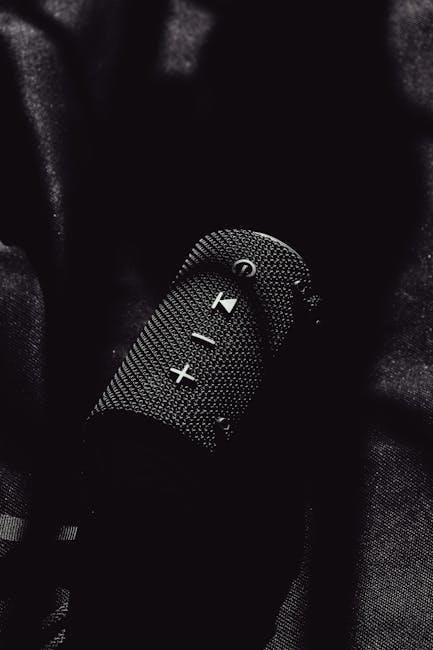
Impedance Compatibility
Understanding impedance compatibility is essential for seamless audio performance. Properly matching wire impedance to your speaker system ensures optimal signal transfer and minimizes distortion. Use a gauge chart to ensure compatibility.
Matching Wire Impedance to Speaker System
Matching wire impedance to your speaker system is vital for maintaining signal integrity. Impedance mismatch can cause power loss and distortion‚ degrading audio quality. Use a wire gauge chart to select the correct impedance for your setup. Ensure the speaker wire’s impedance aligns with the system’s nominal impedance‚ typically 4‚ 6‚ or 8 ohms. A lower gauge (thicker wire) generally offers less resistance‚ making it suitable for longer runs or higher power applications. Proper matching ensures efficient power transfer‚ clear sound‚ and system reliability. Always consult the manufacturer’s specifications to achieve optimal performance and avoid potential damage to your equipment.
Impact of Wire Length on Impedance
Wire length significantly impacts impedance in speaker systems. Longer wires increase resistance‚ leading to higher impedance and potential signal loss. This can result in reduced power delivery to speakers and degraded sound quality. For example‚ a 16-gauge wire may experience noticeable resistance over 100 feet‚ while a thicker 12-gauge wire minimizes this effect. Impedance rise due to length is more critical in low-impedance systems (e.g.‚ 4 ohms) than in higher ones (e.g.‚ 8 ohms). To maintain optimal performance‚ calculate the maximum allowable voltage drop and choose a gauge that suits your setup’s length and impedance requirements. Shorter wires generally ensure better signal integrity and less impedance-related issues‚ making them ideal for high-fidelity audio systems. Always consider both length and gauge to achieve the best sound quality and system efficiency.
How to Avoid Impedance Mismatch
To avoid impedance mismatch‚ ensure your speaker wire’s impedance aligns with your system’s requirements. Start by checking your speakers’ nominal impedance (e.g.‚ 4 ohms or 8 ohms) and match it with compatible wire. Using a wire with too high or too low impedance can lead to signal loss or distortion. Additionally‚ keep wire lengths reasonable to minimize resistance buildup‚ as longer wires increase impedance. Always consult a speaker wire gauge calculator to determine the ideal gauge for your setup. Properly terminating wires with high-quality connectors also helps maintain consistent impedance. Finally‚ avoid mixing gauges in a single circuit‚ as this can create uneven impedance and degrade sound quality. By carefully matching impedance‚ you ensure optimal power transfer and clear audio reproduction.
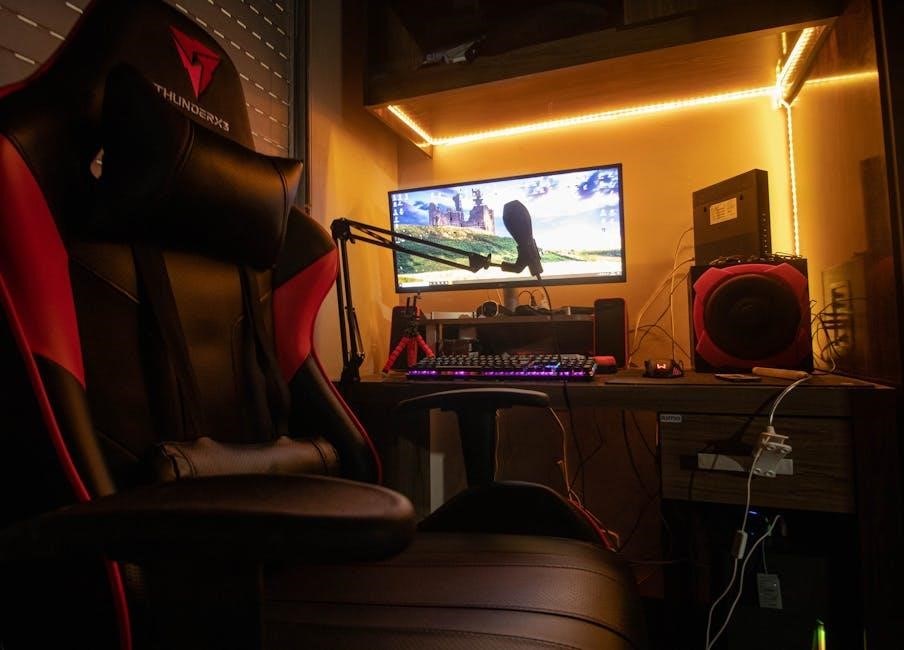
Speaker Wire for Different Setups
Speaker wire selection varies by setup: home theaters require longer‚ higher-gauge wires‚ while car audio needs durable‚ shorter runs. Outdoor setups demand weather-resistant materials for reliability.
Home Theater Speaker Wire Requirements

Home theater systems require careful speaker wire selection to ensure high-quality sound. For most setups‚ a 14- or 16-gauge wire is recommended to minimize resistance over longer runs. The wire should be durable and well-insulated to handle the power demands of your system. For distances up to 80 feet‚ a 14-gauge wire is ideal‚ as it maintains signal integrity and reduces voltage drop. Always match the wire’s impedance to your speakers‚ typically 8 ohms‚ to avoid signal loss. Consider using oxygen-free copper (OFC) for better conductivity and clarity. Proper shielding can also reduce interference from other components in your home theater setup. Ensuring the right wire ensures optimal audio performance and longevity of your system.
Car Audio Speaker Wire Considerations
When selecting speaker wire for car audio‚ durability and resistance to environmental factors are key. A 14- to 16-gauge wire is typically recommended for car systems due to space constraints and power requirements. Ensure the wire is made from high-quality materials like oxygen-free copper for optimal conductivity. Insulation should be resistant to heat‚ moisture‚ and vibrations‚ common in car environments. The wire’s length should be minimized to reduce signal loss‚ and impedance should match your system’s specifications. Proper gauge selection prevents voltage drop‚ ensuring clear sound quality. Additionally‚ consider shielding to minimize interference from the car’s electrical systems. Always prioritize durability to withstand the rigors of a car audio setup. The right wire ensures reliable performance and enhances your listening experience on the go.
Outdoor Speaker Wire Installations
Outdoor speaker wire installations require careful consideration of durability and weather resistance. Use UV-resistant and waterproof insulation to protect against outdoor elements. A lower gauge wire‚ such as 14 or 12 AWG‚ is recommended for longer runs to minimize signal loss. Direct burial cables are ideal for underground installations‚ ensuring protection from moisture and temperature fluctuations. Shielding is crucial to reduce interference from nearby electrical sources. Always secure connections with weatherproof seals or connectors. Regularly inspect the wire for damage or degradation caused by environmental factors. Choosing the right wire ensures reliable performance and longevity in outdoor audio setups. Proper installation practices are essential to maintain sound quality and system integrity in any outdoor environment.

Importance of Good Speaker Wire Quality
High-quality speaker wire ensures clear sound reproduction‚ minimizing signal loss and interference. Durable materials and proper shielding enhance performance‚ providing a reliable connection for optimal audio system functionality.
Material Quality and Sound Clarity
Material quality plays a significant role in ensuring sound clarity. High-quality speaker wires‚ such as those made from oxygen-free copper (OFC) or premium copper alloys‚ offer superior conductivity and minimal resistance. These materials reduce signal loss and distortion‚ delivering crisp and accurate audio reproduction. Inferior materials‚ like aluminum or copper-clad aluminum‚ may introduce impedance issues and degrade sound quality over time. The purity and thickness of the wire directly impact its ability to handle power and maintain signal integrity. Investing in durable‚ high-grade materials ensures consistent performance and enhances the overall listening experience‚ making it essential for both home and professional audio setups.
Insulation and Durability
Proper insulation is essential for maintaining signal integrity and preventing interference. High-quality speaker wires feature durable insulation materials‚ such as PVC‚ Teflon‚ or rubber‚ which protect the conductors from environmental factors like moisture‚ heat‚ and physical damage. Thick‚ flexible insulation ensures the wire remains intact even in challenging installations‚ such as outdoor setups or car audio systems. Additionally‚ insulation helps minimize electromagnetic interference (EMI) and radio-frequency interference (RFI)‚ preserving sound clarity. Durable insulation also enhances the wire’s lifespan‚ reducing the risk of degradation over time. For long-term reliability and optimal performance‚ prioritizing well-insulated‚ high-quality speaker wire is crucial for any audio system.
Shielding for Noise Reduction
Shielding in speaker wire plays a vital role in minimizing external interference and ensuring pristine sound quality. Shielded wires feature an additional layer of material‚ such as braided copper or foil‚ that encases the inner conductors. This protective layer acts as a barrier against electromagnetic interference (EMI) and radio-frequency interference (RFI)‚ which can degrade audio signals. In environments with high levels of electronic activity‚ such as home theaters or car audio systems‚ shielding is particularly beneficial. By reducing noise pickup‚ shielded wires deliver a cleaner‚ more accurate sound reproduction. While shielding adds cost and weight‚ its benefits in maintaining signal integrity make it a worthwhile investment for high-fidelity audio setups. Proper shielding ensures your system performs at its best‚ free from unwanted distortions or hums.
Selecting the right speaker wire gauge ensures optimal sound quality and system performance. Always consider impedance‚ power handling‚ and wire length for your setup. Consult a professional if unsure.
Key Takeaways for Choosing Speaker Wire
When selecting speaker wire‚ prioritize gauge based on system requirements to minimize signal loss. Higher gauges (thinner wires) suit shorter distances‚ while lower gauges (thicker wires) are ideal for longer runs and higher power systems. Ensure compatibility with your speaker’s impedance rating to avoid mismatch issues. Consider the material quality‚ with copper being superior for conductivity. Insulation and shielding are crucial for durability and noise reduction. Always measure the exact length needed to prevent excessive voltage drop. For complex setups‚ consult a professional to optimize performance. Lastly‚ balance budget with quality to achieve the best audio clarity and system reliability.
Additional Resources for Further Reading
For deeper understanding‚ explore guides like “Speaker Wire Gauge Calculator” and “Speaker Wire Size Charts” from trusted audio sources. Articles from 2021 and 2024 offer insights into impedance and materials. Websites like Rock Valley College provide scholarly approaches to research. Advanced search operators can help you find specific topics quickly. Check out tutorials on Google Search tips for efficient learning. Visit forums discussing car audio and home theater setups for practical advice. Lastly‚ consult technical specs from manufacturers to ensure compatibility with your system. These resources will enhance your knowledge and help you make informed decisions for your audio setup.
